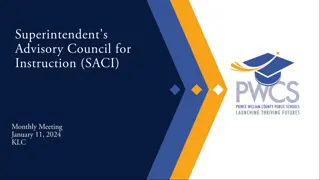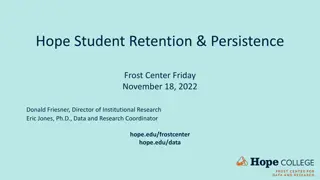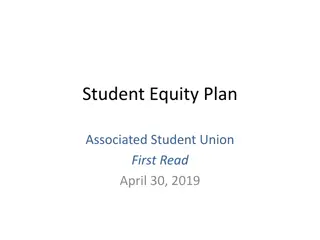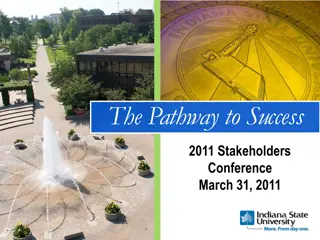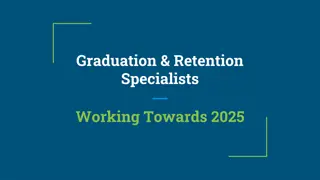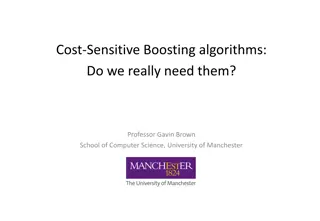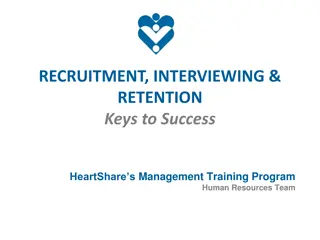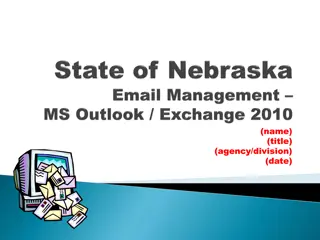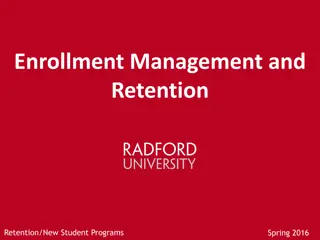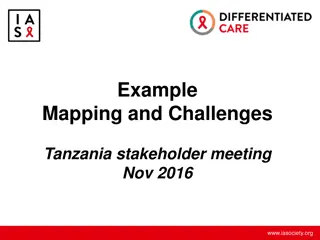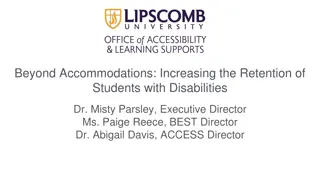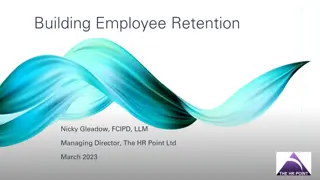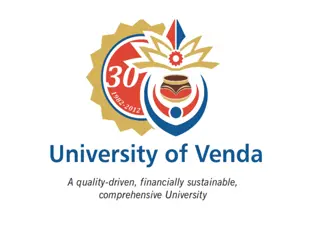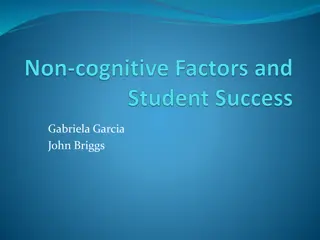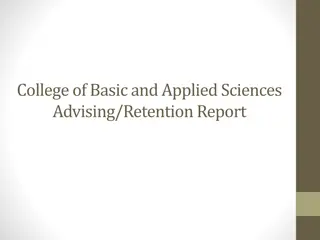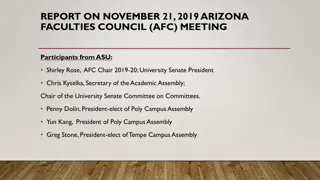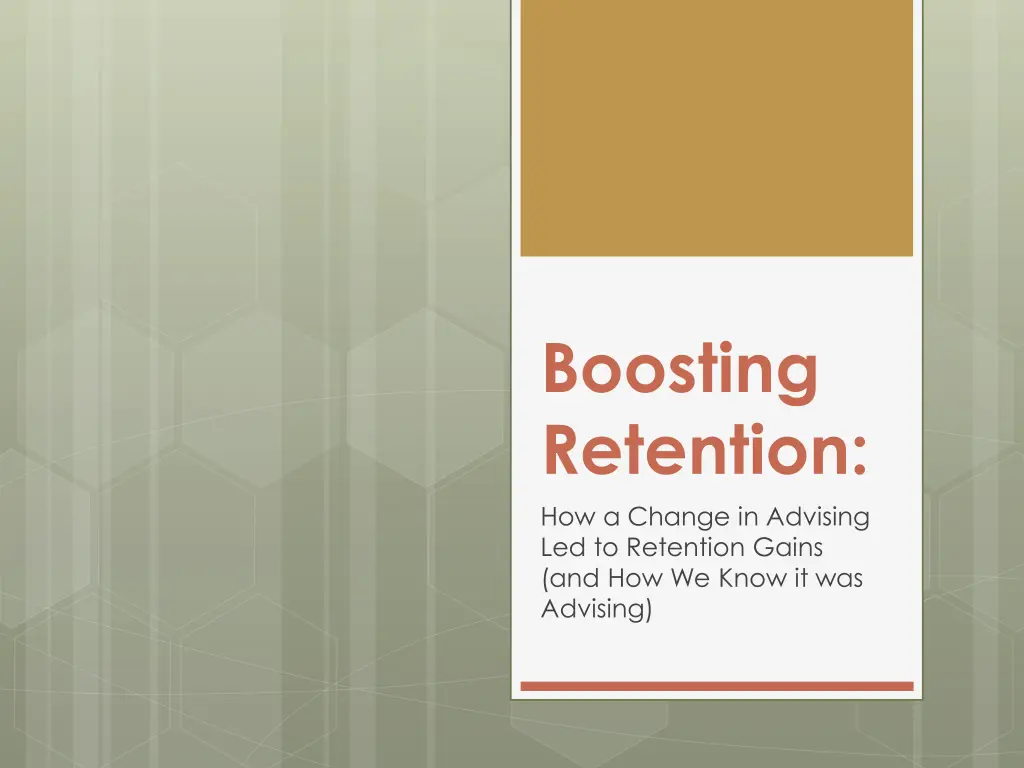
Enhancing Student Retention Through Innovative Advising Strategies
Discover how transforming first-year advising from reactive to proactive, unit-specific to holistic, and optional to mandatory led to significant retention gains. Key changes include restructuring advising units, adjusting caseloads, increasing advising frequency, and optimizing advising locations for student accessibility and support.
Download Presentation

Please find below an Image/Link to download the presentation.
The content on the website is provided AS IS for your information and personal use only. It may not be sold, licensed, or shared on other websites without obtaining consent from the author. If you encounter any issues during the download, it is possible that the publisher has removed the file from their server.
You are allowed to download the files provided on this website for personal or commercial use, subject to the condition that they are used lawfully. All files are the property of their respective owners.
The content on the website is provided AS IS for your information and personal use only. It may not be sold, licensed, or shared on other websites without obtaining consent from the author.
E N D
Presentation Transcript
Boosting Retention: How a Change in Advising Led to Retention Gains (and How We Know it was Advising)
Presenters Reuben Ternes Research Associate Office of Institutional Research and Assessment Sara Webb Director First Year Advising Center
First Year Advising Then and Now
Philosophy of First Year Advising Then: Student-initiated Reactive Optional Unit-specific Now: Proactive, intrusive, holistic Mandatory In conjunction with campus partners
Structure Now: All FTIACs advised in First Year Advising Center (FYAC) reporting to Student Affairs Advising from second year to graduation in school/college advising units Then: All undergraduates advised in school/college advising units reporting to Dean/Associate Dean Advising unit for undecided students reporting to Student Affairs No designated advising unit for first-year students
Advising Caseloads Now: Caseloads based on position 1:360 (adviser) 1:280 (senior adviser) 1:130 (assistant director) Key partnerships with other Student Affairs areas provide additional support Then: Vary in each advising unit* 1:1246 (highest) 1:594 (average) 1:192 (lowest) *Ratios include all undergraduate students, including FTIACs
Frequency of Advising Now: Three required appointments during first year Summer orientation Fall semester Winter semester Accessibility of advisers at student demand Then: Required orientation advising Student-initiated appointments thereafter
Advising Locations Now: Advising located in student service building Admissions Career Services Center for Multicultural Initiatives Disability Support Services Financial Aid The Tutoring Center Veteran Support Services Then: Spread throughout campus in various buildings Not typically connected to student hubs May be difficult to find for new students
New Student Orientation Then: Advisers did not play a key role in the development of the program Advising units provided time to advise students No cohesion of advising and orientation outcomes for program Now: Orientation staff report to First Year Advising Center director Orientation focused on first year success
Major/Career Exploration Now: Embedded exploration in all interactions with adviser MBTI/SII available to all students Parallel Plans Then: Assumed student had decided since advising done in academic unit Incumbent on student to ask for major/career exploration
Student Transitions Then: Summer orientation only university-wide support for transition from high school Students could opt-in to smaller programs if desired No formal process for transition to second year Now: Focus on transition from high school and navigating first year of college Collaboration with advising units to create successful transition to second year Co-sponsored programming Hand-off documents Second Year Experience (SYE)
Communication to Students Now: Full-time Communications Coordinator Greater incorporation of university-wide expectations and messages Robust communication plan includes various mediums Then: Communication messages and frequency varied for all FTIACs Dependent on advising unit
Endless Possibilities It s more than advising
Personal Connection Students are given direct contact information for adviser Front desk staffed to personally answer all walk-in, phone and email inquiries Most email communications come directly from adviser; video messages too! Students regularly receive phone calls from FYAC staff FYAC adviser in cafeteria every week
Paying Attention Birthday greeting Dean s list congratulatory letter with hand-written note from adviser Appointment no show follow-up We haven t seen you reach-out Reach-out to those below full-time status or not registered
Support for At-Risk/Struggling Students Conditional admits Required success course, success coaches Low ACT/HSGPA Five touch-points in fall semester in collaboration with Housing and Center for Multicultural Initiatives Students on academic probation Academic Recovery Workshop, probation tutorial, success coaches
Decisions and Transitions Undecided (or re-deciding) students Pre-start workshops Undecided Checklist Fall series on exploring careers/majors Transition to advising units in second year Hand-off documents Easy access to list of released students
What Are We Doing with Data? Created scorecards to display trend data to track progress. Aggressively displayed minority/majority differences in student outcomes
What kinds of metrics are we looking at? Retention Rates Spliced by: Minority Status, Housing Status, Undecided Status Probation Rates Success of students formerly on probation By Minority Status: GPAs (% getting 2.0, % getting 3.6) Credits Attempted Class Standing (i.e. credits earned)
What Did We Find? Full-Time FTIAC Retention Rates by School & College School/College Total CAS SBA SEHS SECS SHS SON UP 2011 70.3% 75.9% 66.4% 74.3% 70.6% 73.0% 63.8% 62.3% 2012 78.1% 79.5% 75.7% 85.9% 78.9% 78.7% 78.2% 74.0%
Before & After Highlights Retention up almost 8%! Retention up for every group of students! Up for every school and the college. Minority retention up 9% % of Students achieving Sophomore Status up! GPAs are up!
Measuring Impact Is the FYAC responsible for the increase in retention rates? We think so, but how can we be sure? Is it responsible for all of the increase? Correlation Causation
Accounting for Other Explanations When examining non-experimental data, like most educational interventions, one of the techniques researchers can use is to show that alternative hypotheses are unlikely. By dismissing all plausible alternative explanations, your own hypothesis is strengthened.
Alternative Explanations Regression towards the mean Quality of the FTIAC population has improved causing an increase in retention rates Random Chance Other University Intervention
2011 vs. 2012 2011 was a particularly poor year for retention rates. So how much of the gain in 2012 is really just a return to normal i.e. known as regression towards the mean in statistical parlance. Answer: Some.
What About the Quality? 2012 had the best FTIAC class in recent history How might this have contributed to improvements in retention rates? Answer: Some. But even combining the quality of the class, and the return to normal, not all of the increased is explained.
What About Chance? Very unlikely. Since 1992, retention rates have never topped 76%. Retention rates have also never changed from year to year more than 3.1%. The typical change is only 1.2%. The change from 2011 to 2012 was 6 times higher than normal.
What About All Three of These Things in Combination? Can the combination of regression towards the mean, incoming FTIAC quality, and random chance explain the increase in retention rates? Traditional statistics useful here! (Regression) Answer: No! The 2012 cohort lies outside of the 95% confidence of past retention rates, even after controlling for academic preparation.
Recap While it s true that some of the variation in retention rate is explained by the quality of the FTIAC class, a return to normal rates, and chance, there is still a significant amount of unexplained increase. After accounting for all of this, about 3 to 4 percent of the improvement in retention rates is left unexplained. This is OIRA s best estimate of the current impact of the FYAC center on retention rates.
What About Other University Initiatives? Could other university initiatives explain the improvement in retention rates? No one has identified a university initiative that could have impacted so many students so evenly. Improvements in all groups of FTIACs Almost all other university initiatives target small pockets of students. We saw improvements only in first year FTIACs, not in second year FTIACs. Only FYAC Students saw an increase in retention.
Other Improvements Retention Improvements: Undecided student retention up 12% Retention for housing students up 13% Retention commuting students up 5% Minority Retention up 9% Non Retention Improvements: NSSE satisfaction w/advisers up 16% in one year! Fall probation student end-of-year-success up 12% Sophomore standing percent up 10% Minority Sophomore Standing up 16% Students with good standing up 3%
Download This Presentation At www.oakland.edu/oira Institutional Research tab Presentations

